GET PERSONALIZED GOLF COACHING at https://www.cogornogolf.com!
In this lesson, Eric Cogorno and Craig Hanson reveal why tilting your shoulders during the backswing is critical and exactly how much shoulder tilt you need to model the PGA tour pros.
⏱️ 0:00 – Introduction – why flat shoulder turn is destroying your golf swing
🔍 0:53 – PGA Tour Pro Analysis: How much the shoulder tilt PGA Tour pros get in their backswing (40° angle)
💪 2:33 – Why tilting your shoulders in the backswing is so important for the golf swing
⚙️ 4:08 – Craig Hanson’s “Pec Grab” drill for the proper shoulder turn feel
🎯 6:28 – Full demonstration of shoulder tilt and turn in the golf swing
✅ 8:28 – Golf Swing Tilt and Turn – Driver vs. Irons
🏆 10:52 – Craig Hanson’s Drill to train in the perfect 40° shoulder tilt line of the PGA Tour Pros
📹 13:00 – Practice tips and fundamentals
This comprehensive lesson reveals the critical 40° shoulder tilt angle used by PGA Tour professionals during their backswing and explains exactly why tilting your shoulders is so important in the golf swing.
What You’ll Learn:
• The precise amount of shoulder tilt in the backswing used by over 500 PGA Tour players
• How achieving 40° of shoulder tilt in your backswing is the key to optimal ball contact
• Craig Hanson’s “pec grab” drill for perfect shoulder tilt and turn
• How tilt and turn in the backswing work together for consistency
• Craig Hanson’s drill to achieve the perfect 40* shoulder tilt just like the PGA Tour Pros
Key Takeaways:
The evidence is clear from PGA Tour analysis – proper shoulder tilt during the backswing is non-negotiable for solid ball striking. When you understand how much shoulder tilt the pros use and why tilting your shoulders is so important in the golf swing, you’ll eliminate common issues like steep downswings, poor contact, and inconsistent shots.
Practice these proven drills regularly and experience the difference proper shoulder tilt in the backswing makes in your golf game.
Thank you to Craig Hanson for flying across the world to work with us on these YouTube videos! Please check out and subscribe to Craig’s Channel, World Class Golf. / @craighansongolf
#pga #pga tour #shoulder tilt #howmuchshouldertilt #shouldersinthegolfswing #shoulder turn
#golfswingtiltandturn #ericcogorno #craighanson
_____________________________________________________________________
MY BEST STEP-BY-STEP GOLF TRAINING PROGRAMS HERE: https://ericcogornogolf.podia.com
Check out our awesome partners and the products I personally recommend + DISCOUNT CODES:
Takomo Golf – https://takomogolf.com
Shot Scope – https://shotscope.com/?rfsn=7840102.d3a7ba&utm_source=ericcogorno – Use Code COGORNO for 15% off
L.A.B. Golf – https://labgolf.com – Use Code COGORNO for 10% OFF
LiveView Sports – https://liveviewsports.com/pages/ECGolf – Use Code ECGOLF for $40 OFF
Precision Impact Right Wrist Trainer – https://pureswingproducts.com/?sca_ref=1815522.bXQUsGp2bS – Use Code COGORNO for $20 OFF
theHanger Training Aid – https://www.hangergolf.com/?sca_ref=944104.HqM9GYcX2I – Use Code COGORNO to get 15% off!
______________________________________________________________
**I may earn a small commission for my endorsement, recommendation, testimonial, and/or link to any products or services recommended on Eric Cogorno Golf sites. Your purchase helps support my work in bringing you free content to help you learn about golf and improve your game. My goal is to help people through my experience so I will not recommend a product or service unless I’ve
1) Used it personally. (which will be the case the vast majority of the time)
2) Thoroughly researched it and got first-hand user feedback from other professionals I trust and who have used the product/service.
All right, guys. In today’s video, we’re going to be talking about something that completely changed my golf swing. Took me from a struggling amateur golfer to someone who could play day in and day out and hit the ball very solid. A huge, huge, huge part of the golf. So, we’re going to talk about what that is, why it’s so important, and the drills that you can use. As you can see, I’m not by myself. You’re going to see that handsome gentleman in one minute. We’re going to show you what that is. Let’s dive right in. In today’s video, something that we’ve talked about that we both work on in our swing a lot. Something that I’ve struggled with for a long period of time, which is really the tilting during the back swing to lead to the correct tilting during the down swing. Craig uses what he calls evidence-based coaching, right? And you’ve you’ve seen a ton of golf swings and analyze a ton of swings. And one of the things that Craig talks about is this 40° shoulder line uh during the back swing, like how much tilt we have. And I want to talk through that and one or two drills they can do. But Craig, why don’t we flip-flop spots for a second and first things first when we’re talking shoulder tilt during the back swing. Let’s do like the good version versus the bad version. Like what happens if we do the bad version and we don’t tilt our shoulders correctly if they go too flat? Like what does that lead to on the way? Yeah, exactly. I I mean the first thing I I think to notice is that that this this corridor this the averages of movement on the PGA tour when we take 500 players and we analyze these players the average of this shoulder till or turn is pointing one meter or one yard outside the golf ball. Okay. A lot of the time when we’re seeing amateur players, and it’s happening with just so many of them unfortunately, is when they’re turning too level, the left shoulder lifts up, the head will often move off the golf ball. And then what we’re also seeing from there is that the the left side of the of the butt here will move out here. And from here, really, we’re just in such a difficult position because from this position here, a couple things are going to happen. You’ve lost really all your structure. We have to be able to assemble ourselves really, really effectively at the top of the swing. which is such an important thing to be able to keep our eyes over the golf ball. Now, when we turn this way, the chain reaction, we’re setting off at what we would call like a negative chain reaction on the swing. Okay. Now, moving off here, really, we’ve got two chances. What we have to do then is come over with a high right shoulder and a high right hip. And really, that’s just a death move. Show Show us that with the club, what that does with the club. When we Yeah. When we’re getting back, we’re turning to level here. And then when we’re moving this way, we’ll see them come in with a high right shoulder and a high right hip. And obviously, you know, we’re compromising the angle attack. Your arms are coming into a position where it just makes it so difficult. And so, like, even from there, like I take that to mean, and this is what I heard that helped me a ton. When you turn your shoulders flat on the way back, that can actually lead often times to the steep on the way down. Definitely. And so, a lot of you guys that are watching this will kind of identify with the steep down swing and try and fix that and are unable to. And often times, not all the time, but often times that can be rooted in the fact that you turn back to flat with the shoulders when in fact if you tilted correctly on the way back, that could help us on the way down. I think that’s an important little point there. Go ahead, Craig. Yeah. No, it’s just it’s about finding the point of failure, isn’t it? A lot of the times we’re seeing golfers, they’re they’re putting the cart in front of the horse. They’re not finding that one thing. I mean, if we analyze top ball strikeers, it’s unbelievable. This is the motor. This is the engine of your golf swing here. And when we’re looking at these top players, how close they are to one another, they’re within a couple of degrees. It’s absolutely remarkable. I know we’re seeing bowed wrist, and I know we’re seeing cup wrist, high arms, low arms, but really in this area, it’s just the one thing that really stays constant. Yeah. It’s sort of like non-negotiable, you may say. Okay. If you watch our videos now, one of the things we said, Craig, if you go back to flat would lead to the over the top. I know another thing you talk about in your videos is let’s say you turn back flat and you do somehow manage to be able to swing from inside still. That’s going to be a pattern where you’ve had to put other things in. Lots of contact issues there, right? It’s just going to hit just like a mile behind the ball. And I know everyone’s out there trying to get the club from the inside trying to come from the inside. But if you’re over in this direction with a high left hip and a high left shoulder, if you do come from the inside, you really got nowhere to go. And this is where we’re going to chunk and hit fat shots, thin shots, and just add artificial loft. Yeah. So, the getting the tilt on the way back is so important. Um, we’re going to show you a couple of drills. In fact, why don’t Craig, let me borrow that club. Can you show us the grabbing of the chest um drill first, there’s two drills that Craig uses uh that I think are really, really good. We’ll show you the second one in a little bit where you can actually get that 40° line, but I really like this one Craig you use to start with just to get the general feel of the tilt. Yeah. Just get your left hand and put it on your left pec and your right hand on your right pec. And what we’re doing from here is when we’re turning, we’re getting the shoulder to remain and turn underneath the chin so that you’ve got some room here. Now, it’s a great idea to draw this right leg back, draw this extension back, getting the shoulder to the golf ball. Now, from here, it just makes it so much easier to bring the right shoulder back where the left shoulder was. And we that’s what we’re doing. You know, that’s great technique, isn’t it? And I know we have a big male viewership, probably 94 95%, but just in case, there’s a little thing you talk about with lipstick on. You might not want to hit your That’s right. Okay. Yeah. Look, getting it’s a good visual aid. It’s a good visual effect and we need these strong big pictures to be able to do it effectively. Now, so if you are someone that wears little little bit of lipstick, no judgment, that’s your thing. But if you’re keeping your shoulder underneath your chin here, you’re not getting any lipstick on your shirt. And what we’re seeing with so many players, unfortunately, we’re seeing them get to the top and we’ve seen the shoulder cover the mouth, which is just a sign that the shoulders are way too flat. I just can’t stress this enough. You just do not see good ball strikers with a level shoulder tip. Well, I really like Let’s flip flop, Craig. I’m going to um hit a couple. You can grab that club there. So, like the the fact and what Craig’s saying, you know, there’s a lot of different patterns potentially that you would see that work, but the shoulder tilt isn’t really one of them. Like evidence-based that you’ve seen so many swings. These guys and who are great ball strikers are all within this same range or or corridor. Yeah. And the closer you get to it, right, the better you hit the golf ball. I think that’s the important thing. Say that. Say that again. Yeah. Like the closer you get to this position, like the better you hit the golf ball. put that on the screen. Let’s go. Yeah, it is because I mean if you if you’re someone that’s most aers are just turning so level and if it’s a bit of a change, right? So to be able to get yourself to move closer towards this position, getting inside the averages of movement, this PGA zone, right, is that the closer you get as you’re doing it, the better that you’re going to hit the golf ball, it’s just making it so much easier when we assemble the swing correctly at the top. Yeah, there’s no doubt about it. And we’ll put on the screen some players doing this and showing you the 40°ree line. on Craig’s videos does a great job of that of showing the B-roll of the uh the players doing this. And so if I’m doing the drill and you guys are doing this at home, let’s say we start here, pec grab or boob grab, we’re calling off camera, right? Let’s be frank about it. So boo or pec, whatever you got going. I am I just doing like left hand on the left, right hand on the right type of thing. That’s right. Okay. And then when I’m making my I’m making my back swing here, I’m trying to keep my shoulder under my chin. Definitely shoulder my chin. my head. I’m assuming when you’re saying like eyes on the golf ball, I’m trying to keep my head relatively centered. Yeah, sure. I mean, that’s just it just makes it easier to hit a golf ball consistently in the middle of the club. You don’t want your eyes moving all over the place. So, I mean, by exaggerating this move just a little bit. Like, I think I think it’s really good what you’re doing there. You’re just steepening it a touch more. This helps golfers get into this position much much quicker. Yeah. Okay. So, this is actually overexaggerated a little. Like we were when I was doing my rehearsals, you’re saying, “Hey, I’m actually kind of overdoing a little because I know that I’m I tend to go this way.” Yeah. So, this Okay, this is actually a little bit over. And what I’m feeling, guys, when I’m doing this, like Craig mentioned, I mean, I’m definitely feeling a little bit of a left side kind of oblique crunch. I’m definitely feeling my right side of my body and rib cage and your right leg’s extending a little bit. I think really people need to notice that we’ve got what we call symmetrical knee work, meaning that when we swing back, the left knee moves out as far as the right knee moves forwards. And this is really creating extension and helps the body tilt and turn much more effectively. Yeah, there’s no Yeah, I mean that’s another video too we could probably do of the we’ve talked with Steve Saraki a bunch how the leg work on the way back um sort of the peanut butter and jelly of the shoulder tail. Those things work together. My left leg’s certainly going to be flexing forward as my trail legs extending and creating turn of the hip. So even if I did that, Craig, to feel it before we do the main drill, we’ll show you guys how to get that 40° exactly. Maybe I’d do this drill, you know, a handful of times and then hit a ball, try and feel it. Ideally, probably record it, see how I actually did. Exactly. Do the drill again a couple times. So, let one with that. I just did the feel a couple times and then I’m going to try and kind of rehearse that same feel. I’ve got an eight iron here. Now, um, as we’re doing this, this 40° line, is this changing as my clubs are changing, or is it like I’m trying to feel the same thing throughout the whole bag? Yeah, it will change slightly if you’re looking at a driver, but it’s not by much. It’s only 5°. So if you’re looking at a driver, the average on tour is still 35° shoulder tilt. So just because of the length of the club and the setup and that we’re further away, that’s going to happen by itself. But essentially, you really want to feel the same thing that you’re doing with an eight iron. Got it. Okay. So I’m feeling the same, but because the club’s longer, I’m farther away. It’ll naturally get uh flatter, less steep. It’s a question that we get all the time. People want to know, is it the same for the driver? Yes, it is. It’s just that Yeah, it’ll be a few degrees a few degrees less average. As I said, average on two of the driver is 35. And then just like when someone’s wash, if they’ve got the shortest club, like a sand wedge or we’re potentially the most bent over, if we’re kind of trying to replace our forward bend with side bend on the way back, the shorter the club, it’ll be a little bit steeper by itself. I’m not feeling steeper. No, it just happens because of the club. Exactly. You want to keep the same feel. We don’t want to have all sorts of different feels going on. Okay. Now, I kind of cheated that I did a couple. But let’s say I did a couple of feels. This is how you guys would practice this couple feels and then I’m going to hit. And what I’m looking for to change and what I guys what I really saw when I first started putting some attention on this, let me hit one with this here was something like that. I was going to say Craig, you want to tell them or So that was an eight iron. Very solid for me. The difference that I noticed, Craig, and for you guys watching, when I was an amateur and I was decent, I would kind of play like this. I get hot and cold. It could be really good one day, really bad the next. And my contact was inconsistent. And I always had my head go off, shoulders a little bit level because I was just trying to turn. I thought the back swing was like just turn as much as you can. And I got that look you mentioned and I still fall into it sometimes. I got to watch it. I think we all do. Yeah, we all Yeah, it’s very common. But what I got out of this guys was consistency of strike, consistency of solid contact. Keeping your head like a lot of toe hits, isn’t it? A lot of people don’t realize where toe hits come from, but lifting up, moving away and off the golf ball, we get a lot of toe hits. We tend to flip it as well. It’s just such a great way to get compression in your golf swing. It’s like solid contact. It helps. It helps set up the down swing pieces to swing inside like we said for sure. But just in terms of the solidness and consistency of the contact and that’s what changed for me was the dayto-day and that’s obviously what we want for you guys. Let’s just pause for a second. We’re going to show you the second drill where you can get that 40° line exact. All right, guys. So, the second version really to get it more specific of getting that shoulder line like we’re showing you on the screen about a meter outside of the ball to get that 40° line. Um, we just put a ball out here so you guys can see. And I know Craig, sometimes you’ll use a ball or like a bucket. If we have this golf ball here when they’re doing this, when you guys are doing this, it’s sort of just like one big step, right? We said one big step outside and and the ball Craig is like just slightly behind even with the golf ball from face on. Is that fair when I’m doing this? And that’s you know I know when you’re doing this drill part of it being in that position is not only am I getting the tilting piece correct but also to make sure I get the full turn. Yeah, that’s the thing I think the important message to get across is that the the amount of tilt and turn obviously it needs to be appropriate. Right. So this ends or just right in that area there, you’re assuring that you’re getting the correct amount of tilt and turn your swing. And that’s just a that’s just gold. And one of the things that I said when I was practicing this, you know, guys, just so you know, too, cuz I I tend to go too flat sometimes, so I exaggerate and really steepen it a little bit too much. And you’ll see in some of the videos me doing that and us talking about that. And I think that’s appropriate to exaggerate the feels. Yeah. But I think you might be surprised like that to me looks pretty far away compared to what I feel, but when in fact you look at it, it’s right at what we’re talking about. Yeah. I think people also believe that you have to be so like unbelievably flexible to do it. But it’s just not true. It’s just just normal. It’s just good technique. That’s what it is. So is this as I’m doing it and be honest like is this about correct? Is this what would you change here? Is this about Yeah. No, that’s that’s now you’re getting really really close to that line. Yeah. Excellent. And you said Craig, like one of the things because obviously I’m just have an eight iron. I could use like a driver or like put an alignment rod through this club to to extend it out to see that. Yeah. You can just get a little bit longer here. And I think so that it’s easy to see where it points. And then you’ve got to connect to a certain feeling, right? You want to be able to get in there and say, “Okay, if I’m going to do this drill, right, what am I where am I noticing? Where’s my shoulder now? Let’s make a practice swing and let’s feel where that shoulder was so that I can actually hit a ball.” Because it’s the hitting of the ball that changes the swing, right? It’s not just the drill. Now, like when I would do it, would you be okay if I came to see you and I was fixing this? If I felt like I was in between the two just in practice, if you’re a player that tends to be too level with your shoulders, definitely you would encourage someone to move in that direction until they got their shoulders in the correct position and then you wouldn’t want to overdo it. Then you’re cool. Okay. Yes. I like that. And I I really like this this main one here too where I feel like my lead shoulder’s working back and down a little and and really my trail shoulder as well, Craig. I feel like almost like I’m pulling that trail shoulder around a little bit more. Yeah, that’s it. That’s the feel you want to have. And then you can sometimes just close your eyes and say, “What am I actually feeling there?” And pick up a club and and then create that same movement. And obviously if you’re, you know, working with your mobile phones and your videos, you can get in there and have a look. Yeah, I like that. It certainly feels like that right side for me is stretching out. And I’m going to hit another one. Right side is stretching out um as that lead side’s just crunching down just a little bit compared to normal. I like how confident you are in me standing that close. Gosh. Gosh. Thanks. Now you’re hitting them. That’s it’s solid ball. So yeah, I like that. Greg, I think the the messages for you guys, the tilting that we do on the way back, right? Really when you draw the line up the, you know, sort of angle of the body at setup, trying to really keep that inclination about the same. Yeah. There’s good logic there, too. You like, “Oh, yeah. Obviously, that’s easier to hit compared to me going up, down, up, down, up, down.” Yeah. Yeah. And the consistency of solid contact and to help us get the down swing going correct. The closer to the PGA averages here. And it’s just improves everybody’s ball strike. I like that, Craig. The way you say that where it’s like the closer you get to these things, the better you hit. And I think that’s the goal here. No matter where someone’s at or where they’re coming from, we’re not all going to swing exactly the same, but these are proven corridors to work within. And the closer you can get to them, the better you hit. That is word for word beautifully said. The closer you get, the better you hit. Craig Hansen, World Class Golf. We’re going to put that link down below if you guys want to check that out. Any questions or comments, leave them down below. We got a couple more videos coming with Craig. Hopefully you guys will enjoy those next.

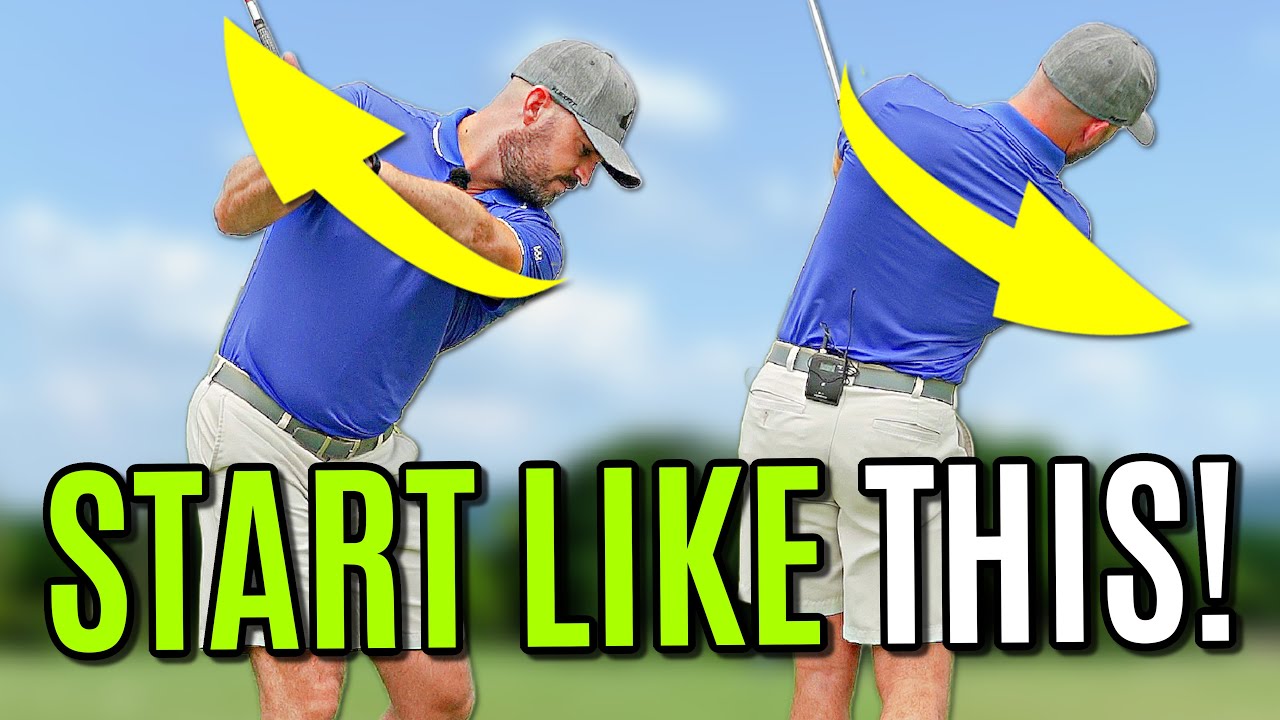

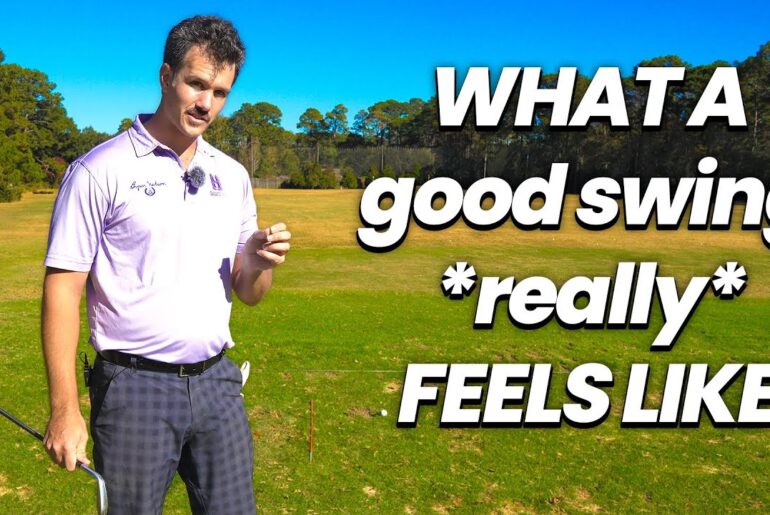

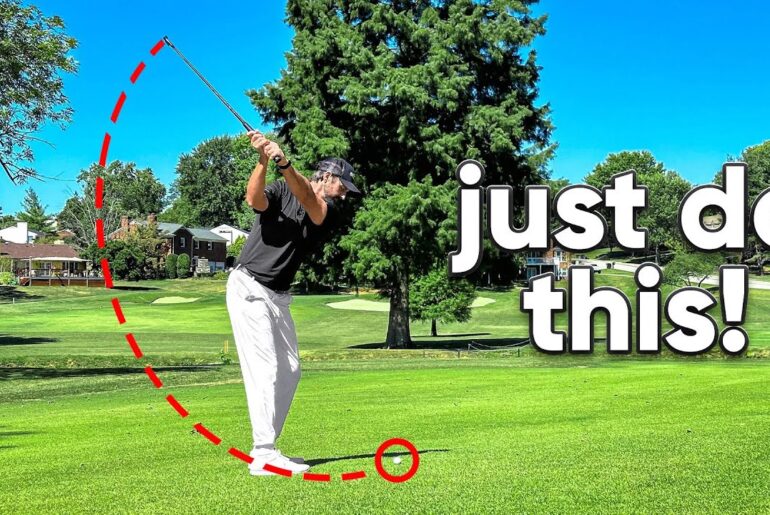
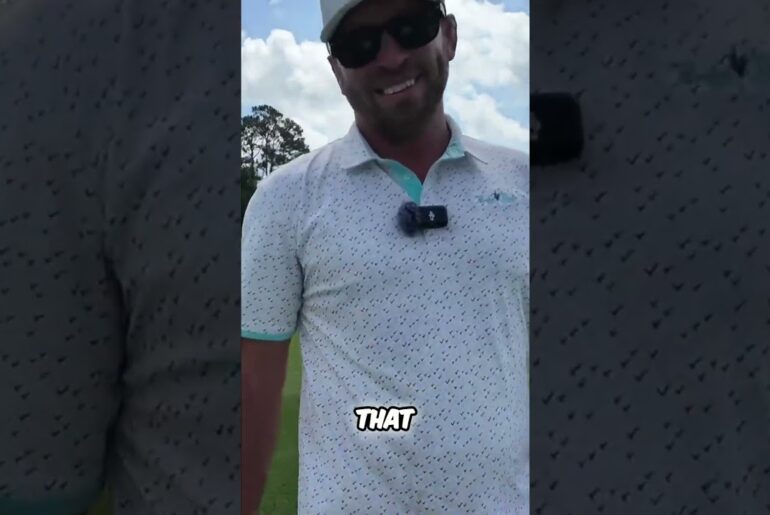
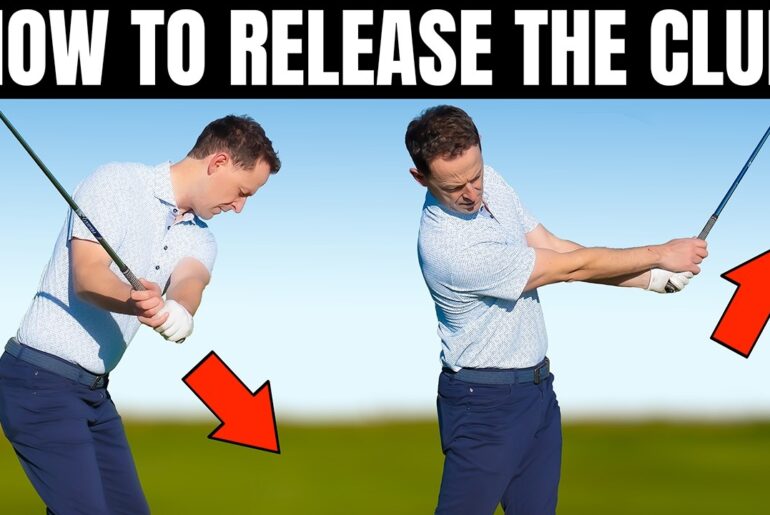
13 Comments
Always great videos 👍
Good stuff.
Trust me – buy the Deep and Shallow programme these guys put out!!
Excellent explanation.
Great video but we need a stewards inquiry about that metre 😁
Sometimes I resent being lumped into the term “amateur”. I find that most instructional videos I watch are directed more toward the beginner and I just click away
What is the proper way to aim with a driver and irons
Does this apply with the driver ❤
I love that the stack tilt methodologies are more main stream than they used to be!! Great drill to achieve the 40 degree tilt.
Great video. I would have liked a comment about how the the distance the hands are from the body at address affect the swing plane. Seems to me that is an important point for this particular lesson and the #2 drill.
You and Craig as a team is money…keep it up.
aiming to your target
The short and long versions next to each other on your YT page is brilliant! Thank you.